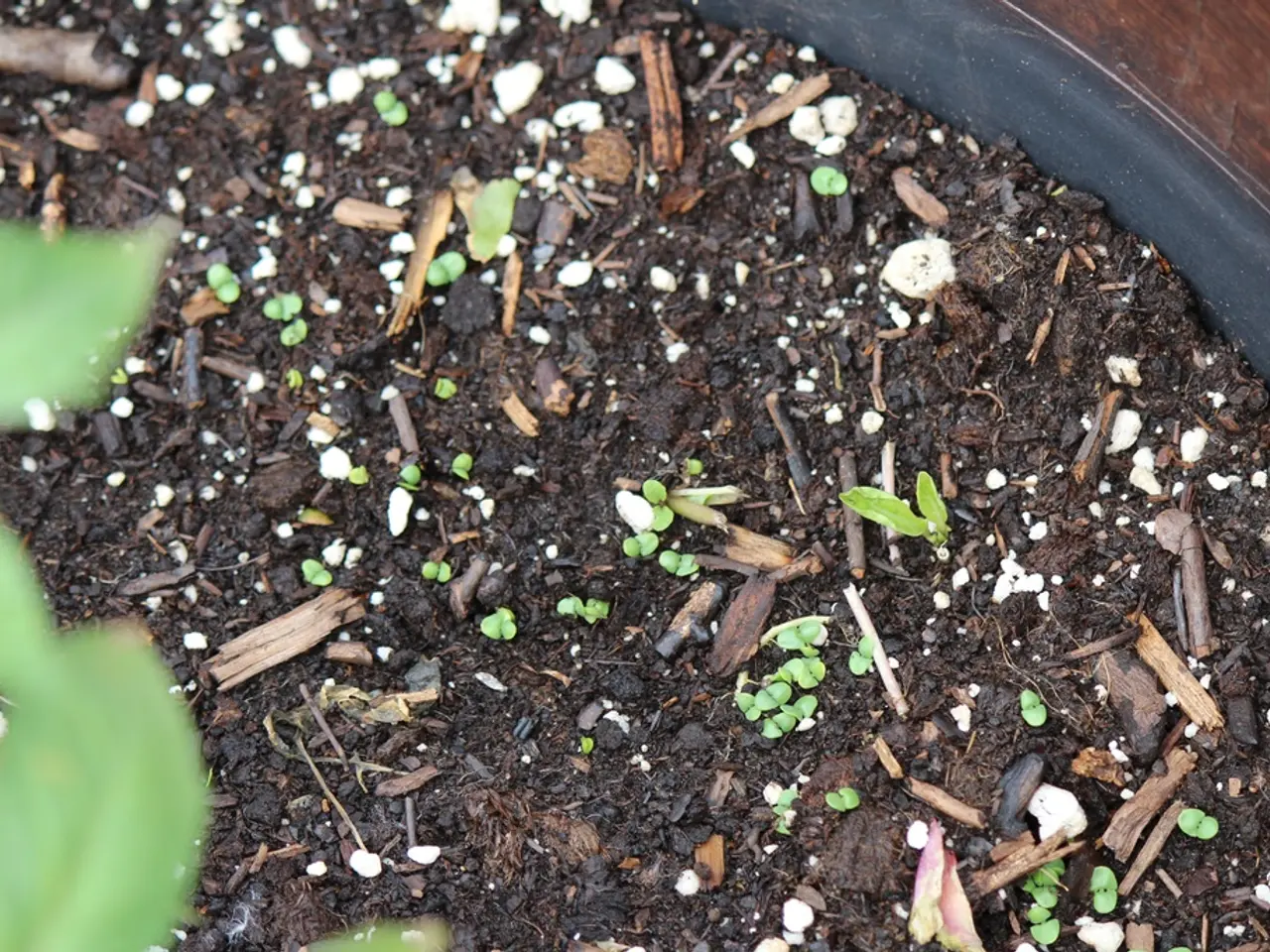Enhancing Soil for Optimal Plant Growth: Recommendations for Vibrant Development
Want to boost your garden's productivity and promote long-term soil health? Here's a comprehensive guide to rejuvenating soil using regenerative agriculture practices.
Assessing Your Soil
Before making any changes, it's crucial to understand your soil's current conditions. Analyse the soil to assess its physical, chemical, and biological properties. This will help you identify nutrient deficiencies and understand microbial activity. You can collect and submit a soil sample to a soil-testing lab for a precise measurement of soil pH.
Minimizing Tillage
Preserve your soil structure, organic matter, and beneficial microorganisms by minimizing or avoiding tillage. Opt for no-till or minimal disturbance practices. These methods favour a healthier soil ecosystem and reduce the risk of soil erosion.
Incorporating Organic Amendments
Incorporate organic amendments such as well-composted manure, green manures (especially legumes), plant residues, and biochar to increase fertility, improve soil structure, and raise organic content. These amendments also encourage the growth of beneficial soil organisms.
Utilizing Cover Crops
Protect your soil surface year-round by planting cover crops like clover, vetch, oats, mustard, and others. Cover crops help prevent erosion, fix nitrogen (especially legumes), suppress weeds, and feed soil biota.
Promoting Biodiversity
Diversify your cropping systems and adopt conservation agriculture practices like mulching and residue retention. This promotes biodiversity, enhances soil health, and improves water retention.
Necessary Items
- Soil testing kits or lab services for soil analysis
- Organic compost and well-aged manure
- Seeds for cover crops
- Mulch materials like straw or plant residues
- Optional biochar and mycorrhizal fungi inoculants
- Minimal or no-till gardening tools
Additional Tips
- Maintain soil pH near neutral (6.0–7.0) for optimal nutrient availability. Amend with sulfur or organic acids if needed.
- Avoid chemical pesticides and fertilizers to protect soil life.
- Regularly test soil (at least annually) to monitor nutrient levels and adjust amendments accordingly.
This integrated approach to soil rejuvenation forms the foundation of regenerative agriculture, improving long-term soil health, carbon sequestration, water retention, and crop productivity. The no-till, cover cropping, and organic amendment combination has been repeatedly demonstrated to enhance soil fertility and resilience while reducing erosion and runoff.
Mulching and Composting
- Use a mulching mower to return grass clippings directly to the surface every time you mow.
- Shred fall leaves with a mulching mower and spread them onto your lawn, or store them in a compost heap to break down for later use.
- Spread well-composted horse manure over your lawn once or twice a year (well-composted manure will not burn your lawn and will contain fewer viable weed seeds).
- Ensure organic amendments have not been treated with herbicides.
- Vermiculite and perlite can also be used as soil amendments.
- When using compost as mulch, spread it around plants, vegetables, trees, and shrubs, and add new layers once or twice a year, 2-3 inches deep.
- Testing the pH of soil is essential for optimal plant growth, and most plants thrive in a pH range from 6.0 to 7.5.
- When adding compost, it's best to mix it in 2-3 weeks before planting to give the nutrients time to leach into the soil.
Other Tips
- Frequently applying guano to soil can provide a rich source of nutrients, but it is important to avoid using guano that has been treated with herbicides or other chemicals.
- Compost should be fine, with no sticks or large pieces, and it should be dark brown to black in colour.
- Adding compost to soil is an excellent way to rejuvenate it and replenish nutrients. It helps soil absorb water and nutrients and attracts beneficial bacteria and worms.
- Wood by-products such as sawdust and bark mulch can also be used, but ensure they are untreated.
- Sand can be used as a soil amendment, but it's important to use it sparingly as it can affect soil structure and drainage.
- To assess your garden's soil conditions, analyze its physical, chemical, and biological properties using a soil testing kit or lab service.
- Incorporate fashion-and-beauty products that promote organic and sustainable practices, such as cruelty-free cosmetics and eco-friendly clothing.
- Stock up on educational resources for personal-growth and career-development, like books, online courses, and seminars about regenerative agriculture and sustainable living.
- Plan a travel itinerary that includes visits to eco-friendly tourist destinations, like sustainable farms, national parks, and cities known for their green initiatives.
- For food-and-drink, choose locally-sourced, organic ingredients and invest in a high-quality reusable water bottle to reduce waste.
- Adopt a pet from a shelter, providing companionship and giving a home to an animal in need.
- To maintain a happy relationship, engage in activities together, such as hiking, trying new recipes, or attending workshops on communications and conflict resolution.




